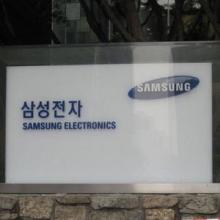Why Samsung's Strategy Change Starts With Fewer Smartphones
Submitted by Ramin Edmond on

Samsung sells more smartphones worldwide than any other vendor. But even with 23.8 percent market share, according to IDC, its dominance in the space is not what it was. The company held a 32.5 percent market share at this point last year.
"What's happening is because they're not in growth mode anymore, their strategy isn’t working for them from a customer or profitability standpoint," said Patrick Moorhead, president and principal Analyst of Moor Insights & Strategy, a leading tech analyst firm based in Austin, Texas. "This is one of the hardest places you can be in as a company. What Samsung has to do is they have to think about innovations and what the consumers are really going to gravitate around. If you have a brand problem, you want to show you have the highest brand out there. You have to show you are the innovator."
After releasing the Galaxy S5 smartphone in April, Samsung also launched the Galaxy Alpha, announced the Galaxy Note 4 and Note Edge in September. The biggest competitor to those high-end models is Apple's iPhone 6 and 6 Plus, which also launched in September and are the only two smartphone devices Apple launched this year.
"Samsung previously had a lot of success versus its competition by doing what I like to call, 'the spray and pray method' of sending out models," said Moorhead of Moor Insights & Strategy. "They offered pretty much every type of model everywhere. That is actually a really good move when you are the giant of the industry. You don’t have to determine what people on the whole want because you are offering everything. But what's happening is the industry is maturing and people are getting a better idea of what they want, so now that strategy isn’t as profitable for Samsung."
Moorhead says that developed markets such as the United States isn't a place to launch four high-end smartphones, while in the Chinese market, Samsung's products needs to be more competitively priced with the local vendors there. He says ceasing the production of certain models will certainly stop the bleeding, but the company won't see a chance to turn around until it launches a new innovative product and shows that it is differentiated from the competition.






